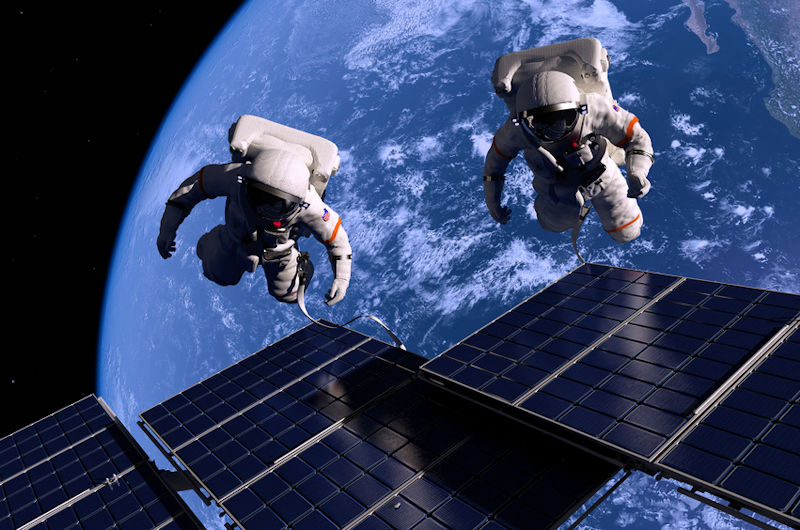Seit mehr als 15 Jahren forschen Prof. Dr.-Ing. Bernd Kröplin und sein Team über die Informationsübertragung im Wasser. Ursprünglich hervorgegangen ist dieses Gebiet aus den Bemühungen eine "einfache Raumfahrtmedizin" für die Astronauten an Bord zu entwickeln, mit der sie sich auf bioenergetischer Behandlungsbasis bei kleinen gesundheitlichen Verstimmungen selbst versorgen können. Dabei ist uns aufgefallen, daß sich schwache Feldwirkungen, die mit üblichen Messmethoden nicht feststellbar sind, im Wasser abbilden und unter dem Mikroskop betrachtet und dokumentiert werden können.
Die Methode der Untersuchung unter einem Dunkelfeldmikroskop wurde nach natürlichen Wässern auch auf Körperwässer (Speichel, Urin, Blut) angewandt und hat zu einem eigenen Forschungszweig geführt. Inzwischen gibt es weit mehr als 10.000 Fotos in unserer Wasserdatenbank. Die "Welt im Tropfen" war geboren.
Neben den verschiedenen Forschungsberichten zum Thema haben wir auch die Bücher "Welt im Tropfen" und "Die Geheimnisse des Wassers" veröffentlicht. Die Bücher wurden auch in Englisch als "World in a drop" und "Water and its secrets" veröffentlicht, in spanisch als El Mundo Interior del Agua.
Erstmals wurde die Ausstellung "Welt im Tropfen" als externes Projekt der Expo 2000 bei Hannover gezeigt. Nach zahlreichen Ausstellungsstationen wird sie immer wieder um neue Froschungsergebnisse und Bilder ergänzt. Die aktuellen Ausstellungstermin finden Sie hier.
Unsere Forschung "Welt im Tropfen" führen wir seit über 15 Jahren mit Wissenschaftlern aus aller Welt und interessierten Mitarbeitern weiter. Kontakt zu uns können Sie gerne hier aufnehmen.

“The topic and content of this book “World in a drop” is a clear reflection of the interest and capacity of Prof. Kröplin to cross over the borders of knowledge between disciplines, in an effort to make science progress. For the last fifteen years Prof. Kröplin has worked with a group of scientists in the understanding of the behaviour of the human body contemplated as a physical system. His first steps in this challenging field were directed towards the so called bio-resonance techniques. The aim here was to predict the performance of organs and ultimately cells in the body under the effect of electromagnetic wavers. His vision is that many of the functions of our body are governed by the energy in the cells. The control of such an energy would mean, in the limit, the capacity to heal damaged cells. This will invariably lead to the cure of many diseases.
The research in bio-resonance lead Prof. Kröplin to the study of water, as the basic element in the body and, hence, the one responsible for transporting much of the information through the different parts of the body at nano, micro and macro levels.
Water and information soon become for Prof. Kröplin and his team a single concept. Understanding the way water collects and transports information was seen as the essential step to find out the complex behaviour of our organs and their reaction to external agents.
This book contains the first outcome of the research of Prof. Kröplin’s team in the search for the mechanisms by which water collects, stores and disseminates information. The outcome of this challenging work is a world of results and images which, behind their intrinsic natural beauty, also contain the information needed for understanding the behaviour of our cells and the overall body system.
Extracting and analyzing the information hidden in the water drops will therefore allow scientists to find out answers to many mysteries of our physical existence and will provide ways to solve many problems in medicine and life sciences from a new perspective. The task is enormous and, obviously, the first results of this research included in the book can only be seen as an indication of the way to go forward and the promise of what lies ahead.
I finish these lines with my thanks to Prof. Kröplin for authorising the publication of this book. Many thanks also to Elke Pahl for the translation of the original manuscript in German and to Adriana Hanganu from CIMNE for the excellent editorial work.
Finally I thank the Royal Academy of Doctors of Barcelona for the financial support for the publication of the book.”
EUGENIO OÑATE
Director of CIMNE
Member of the Royal Academy of Doctors of Barcelona
President of the International Association for Computational Mechanics (IACM)